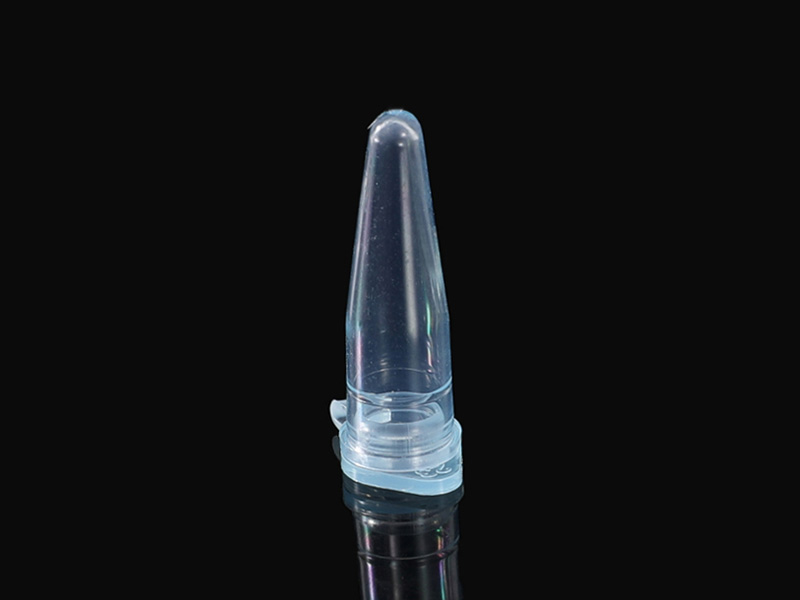A 0.2 mL PCR tube is the standard volume for PCR and other molecular biology applications. The standard volume helps to save expensive reagents and enables rapid heating of the PCR mixture in a thermocycler. 0.2 mL tubes are suitable for a small number of samples and are made of medical grade polypropylene to minimise evaporation. Mingji standard 0.2 mL PCR tube is used for DNA extraction, qPCR, and other molecular biology applications.

DNase-free
Using a DNase-free PCR tube is a great way to get high-quality RNA samples. PCRs use the same primers as conventional PCRs but the DNA is completely free of contaminating enzymes. This makes the PCR much faster and more accurate. The following steps are used to prepare DNase-free PCR tubes. Read on to learn more. We used DNeasy Blood and Tissue Kit to isolate DNA from peripheral leukocytes. The specimens were lysed in a lysis buffer. The cells were then placed into a NucleoSpin tissue column. The DNA bound to the silica membrane was reversible and specific for nucleic acids. The column also helped remove contamination and was used to determine the concentration of DNA.
A 0.2-mL DNase-free PCR tube was used for the PCR reaction. The total reaction mixture contained 6 uL of 5x master mix, 12-15 ng of DNA template, and 0.9 uL of forward and reverse primers each at 10 pmol/mL. The PCR reaction was carried out using the aac(6')-Ib gene, a common bacterial pathogen.
RNase-free
When performing a PCR experiment, it is important to use an RNase-free PCR tube to ensure the safety and quality of the sample. These tubes are designed with a low-pressure seal and come in an eight-strip format. They are guaranteed to be RNase and DNase-free. Furthermore, their polypropylene construction makes them suitable for autoclaving. In addition, Fisher Scientific offers a GSA contract and GSA Advantage to its customers.
The resulting PCR product should contain 154 ng of RNA. After enzymatic digestion, the RNA should be purified and stored at -20degC. For more information, see Appendix B. For instructions on RNA clean-up, see the following steps. After the RNA is purified, store the mixture on ice. This will prevent contamination of the sample and allow for further amplification.
In addition to the RNase-free PCR tube, you can also use this method to analyze RNA samples. First, you need to prepare the RNA samples. To do this, you need to add the sample to the RNA template. Then, add RNase-free ddH2O to the sample. Finally, mix the RNA with the RNase-free PCR buffer. It is important to use the RNase-free PCR tube because it prevents gDNA from sticking.
Pyrogen-free
A high quality Pyrogen-free PCR tube can be used for a variety of PCR applications. They feature a hinged lid, a 0.2-mL volume, and are guaranteed to be RNase, DNase, and pyrogen-free. These tubes can be autoclaved without damaging the tubes. Each individual tube has a Class 100,000 cleanroom and a fully automated manufacturing facility. The lid is made of virgin polypropylene, which ensures uniform heat transfer and optimal reaction efficiency. These PCR tubes are available in white color and are certified to be free of detectable RNase, DNA, and pyrogens.
Mingji plasticware is made of prime virgin polypropylene and exhibits an excellent balance of gas and antistatic properties. This Pyrogen-free PCR tube has an ultra-thin wall design and is compatible with standard 96-well heat blocks. Its high-quality 0.2-mL polypropylene makes it a reliable choice for PCR experiments. PCR test tubes with the same material and quality will give you superior results.
A high-quality Pyrogen-free PCR tube has a maximum centrifuge force of 16,000g. It is also available in a wide range of sizes. The most common Pyrogen-free PCR tubes are 1.5-mL opaque black tube, 2.0-mL self-standing PCR tube, and 2.5-mL polypropylene tube. Some types of Pyrogen-free PCR tubes have graduated caps. The conical base allows for easy writing.

 简体中文
简体中文











